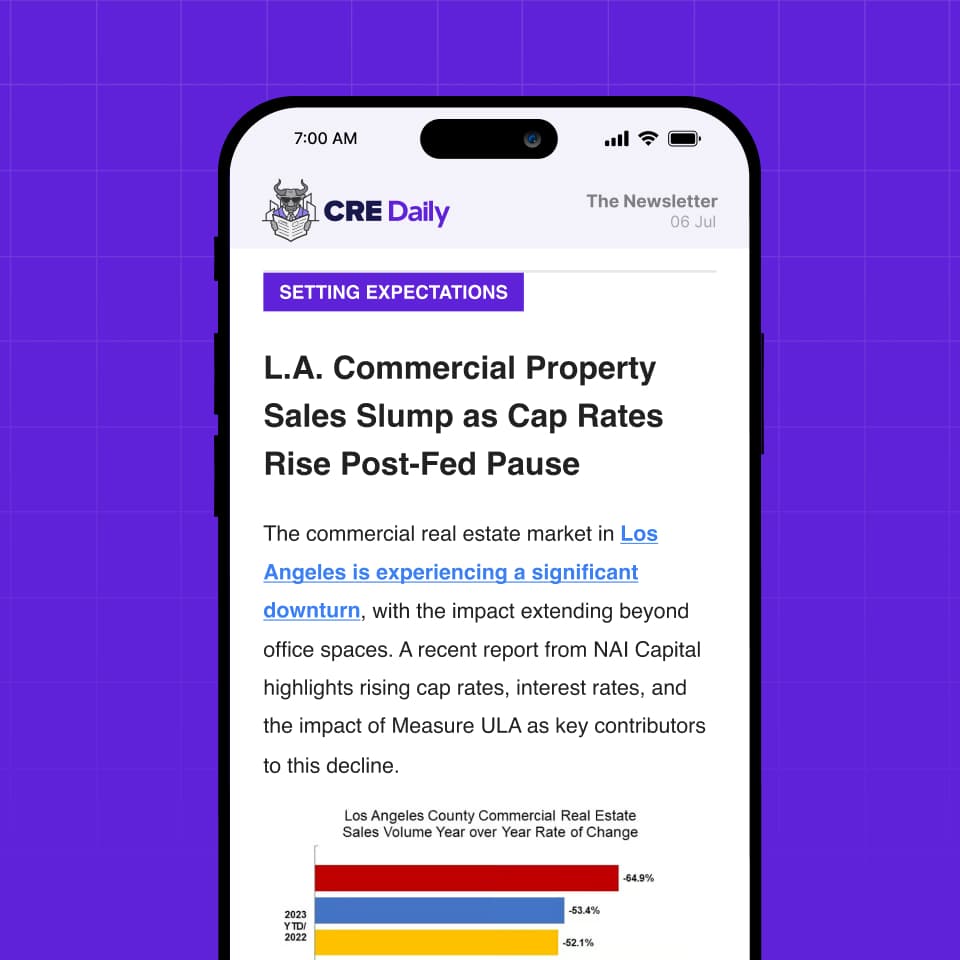- Nearly $957B in commercial real estate loans will mature in 2025, 3% more than in 2024.
- Higher long-term interest rates led many borrowers to extend 2024 maturities, pushing more debt into 2025.
- MBA projects $583B in new CRE lending this year, up 16% from 2024, with multifamily loans accounting for a large portion.
- Looking ahead, MBA forecasts $709B in total CRE originations in 2026 as markets stabilize.
The CRE sector faces a growing debt burden in 2025, with $957B in CRE loans coming due—roughly 20% of all outstanding commercial mortgages, per GlobeSt.
Notably, this is up 3% from 2024, partly due to extended maturities from last year as borrowers struggled with rising long-term interest rates.
“Many loans that might have matured in 2024 were extended into 2025,” said Mike Fratantoni, MBA’s chief economist.
Get Smarter about what matters in CRE
Stay ahead of trends in commercial real estate with CRE Daily – the free newsletter delivering everything you need to start your day in just 5-minutes
Who’s Holding The Bag?
The splits between entities and sectors holding the loans are interesting. By sector, hospitality actually has the biggest loan burden, with office in second place.
- Industrial: 22%
- Office: 24%
- Hotel/Motel: 35%
- Multifamily: 14%
- Retail & Healthcare: 18%
Meanwhile, credit companies and alternative lenders, alongside CMBS, currently hold the biggest bags on an entity-by-entity basis.
- Depository institutions: $452B (25%)
- CMBS & asset-backed securities: $231B (29%)
- Credit companies & other lenders: $180B (35%)
- Fannie Mae, Freddie Mac, FHA, Ginnie Mae: $31B (3%)
- Life insurance companies: $64B (9%)
Brighter Lending Outlook
Despite these maturity challenges, MBA projects $583B in CRE lending for 2025, a 16% increase from last year. Multifamily lending is expected to reach $361B, up 16% from 2024.
By 2026, MBA anticipates $709B in total originations, with $419B going to multifamily loans.
“There are still challenges in CRE, but signs of stabilization are emerging,” Fratantoni noted. “If rates continue to decline, we expect both borrowers and lenders to seize opportunities.”
In Summary
MBA expects slower economic growth and a weaker job market in the coming years. However, with abundant capital ready to be deployed, lending activity is likely to increase—especially if interest rates decline further.
The large volume of maturing loans in 2025 remains a concern, but MBA believes the market is beginning to regain momentum.

















